Dear Friends,
Today, as I cruised through the umpteenth curve on US Highway 93 between Challis and Salmon, Idaho, I saw border collie Clyde’s ears perk up. He saw them before I did; as I started braking, a line of about thirty-five bighorn sheep were single-filing across the highway in front of us.
Ewes and their young trotted across the road and literally ran up a near vertical roadcut on the right side of the road. Clyde was absolutely glued to the windshield as they made their way from one side to the other.
As a ram came on to the pavement, I smiled at the memory of a few years back when a much larger big-horned ram decided to stop, and crossed not only the yellow line, but right into the world of human commerce.
If you’d like to see how a wild sheep became king one day in that river canyon, read on!

The southbound semi, loaded with a swaying 63,000 pounds of Douglas-fir lumber freshly harvested, milled and kiln dried from the forests of Montana, chugged around the hairpin curve, and slammed on the brakes, locking them up, laying down rubber and smoke. The King of the canyon stood in the way and refused passage. Anger rose up in the truck driver, as he slammed the air horn on his idling Peterbilt. The horn echoed in the river canyon, but the King was unyielding.
Road Rage Man was on a deadline, after all, and was attempting an ill-fated shortcut on US highway 93 across the rugged mountains of Central Idaho. Everyone from trucker to tourist is wooed by the siren song of a fairly straight blue line of Highway 93 on google maps, but the fact that the road follows the Salmon River should be the first clue that the map image was not the straight story.
One day, as Caryl, I and the kids went to buy groceries in Salmon, Idaho, a little over an hour away from the ranch, Annie and Maddie counted the curves in this highway stretch at the bottom of the third deepest canyon in North America (deeper than the Grand Canyon). Their agreed upon number: 200.
But although the curves do take their toll on trucker and tourist, there is a growing threat to Salmon River Canyon wayfarers. The king and his band of merry men will often perch on the high cliffs above, knocking down piles of rocky rubble on icy and blind curves along cliff hugging roads with no shoulders. I’ve actually witnessed these terrorists of the mountains raining down baseball-sized rocks over both lanes of the highway for over a quarter mile. Sometimes they choose to launch a boulder the size of a picnic cooler. Either way, when we see rocks on the road we know to look around for them.
And this time of year they have started instituting mandatory stopping checkpoints as they stand unflinchingly in middle of the road.
The name of king: Rocky Mountain Bighorn Sheep.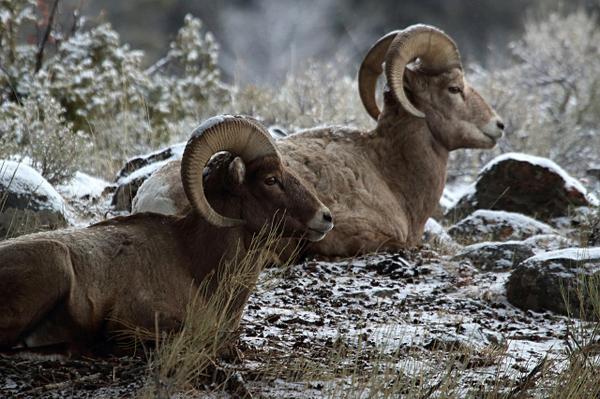
Caryl and I stopped in the northbound lane to observe Road Rage Man, in the opposite lane. Now, he was yelling out the window. A bighorn ram, with a full curl of impressive horns stood unyielding in the middle of his lane. The truck slowly eased forward, hoping to push the proud ram off the road. The ram responded with the classic pose: head down, planted feet, and horns aimed toward the wall of chrome that faced him in the truck’s grill. He was in the rut, and had slammed his head in the past few days into many other competing rams that jockeyed for position among females. This truck was nothing to him but another object to slam his head against. I’m afraid our trucker friend really had no idea. I braced for impact.
I recalled as I watched the happy memory of poetic justice when one of our old Angus girls set a well-placed kick into a late model pickup’s chrome grill. The irritated driver had gotten too close in his pushy hurry to get down the road. This wasn’t the Cross Bronx Expressway. This was Idaho. It’s actually a state statute that cattle have the right of way on roads.
Cow foot made contact, and the pickup grill imploded. Chrome fragments scattered over the pavement on the Pahsimeroi Road. Rebecca, who was riding herd with me on horseback on the other side of the pickup, was transfixed at what just happened, and couldn’t look away from the fractured front of the shiny truck. My own eyes were fixed forward despite the damage, and after looking to see if their windows were closed, I called quietly over to her, “Just keep your eyes forward, Bec. Just keep looking forward. You saw nothing.”
Likewise, those ram’s horns could do some damage. Some researcher devised a way to measure the actual degree of impact (how?): it was over 2200 lbs. That’s like having a 1 ton rock dropped on your forehead. Ouch.
How is this possible? It has to do with nature’s engineering. First, a layer of keratin (the stuff that makes your fingernails) covers the entire horn. It’s somewhat pliable, and spreads the force of crash over the entire horn structure. Second, inside their heads, the core of the horn is connected to the skull via a double system of boney plates along the sides of a very large sinus cavity. Those boney plates are knit together with cartilage, making them shock absorbing, and honeycombing through the bones and cartilage connection absorbs the impact of crash. So, our bighorn ram friend can go on thinking thoughts about the weather or NFL scores or pretty girl sheep while bashing heads.
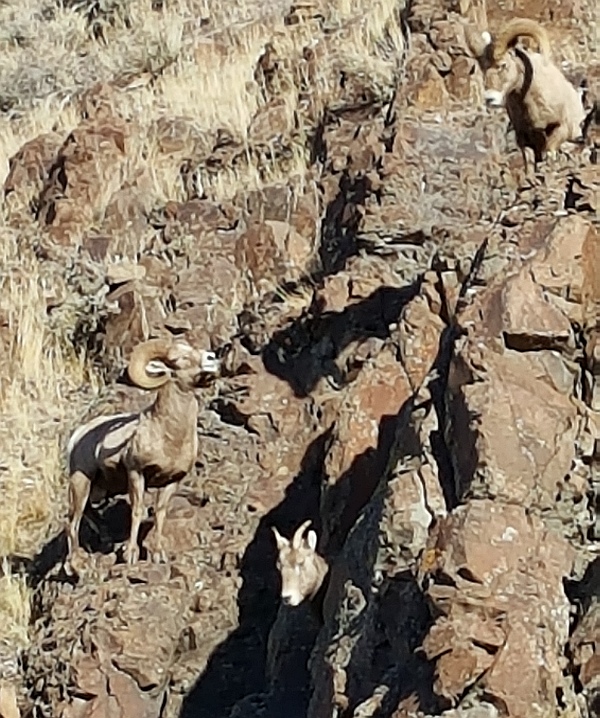
“Get OUTTA the WAY!” Horn blared again.
Like a coiled spring, the ram began to prepare for first contact. But suddenly, something changed. The ram tilted his head sideways for a second, sniffing the wind. Wait. Yes. There it was. The fragrance of female was scintillating his senses, and the perfume that wafted through the thick morning canyon air led his eye to the object of his desire. A young female sheep nonchalantly picked her way across the near vertical cliff face on the other side of the road. Sadly, she seemed fairly oblivious to the fact that her would-be suitor was singlehandedly standing off a 40-ton piece of steel powered by Cat Diesel (just like any female unimpressed by foolhardy male prowess).
But to our ram friend, about to ram chrome, she seemed far more interesting than the noisy iron thing. He sauntered off the road, and skipped into the rocks to follow his instincts, and all was well. Road rage man was for the moment placated, got gears ground into place, and the big wheels started rolling. I hope he watched for rocks.
These wild sheep like it in the rocks and cliffs along the Salmon River. There, they find refuge from wolves, and plenty to eat in the cracks and the small meadows between cliff faces. Only mountain lions will venture where wild sheep live; they have no other natural predators. They carry on here, as they have for thousands of years.
Sheep were once ubiquitous over much of the Rocky Mountain West, and very plentiful. Locally, here in Central Idaho, there was an entire band of Shoshoni called the Sheepeaters or Tukudeda, as they called themselves. But the never-ending saga of conquest and colonization inevitably was written as settlers poured into the country. With them came domestic sheep, and with them came numerous strains of pneumonia unknown to wild sheep. As a result, it nearly wiped native bighorn sheep out, except for remote areas, like the Salmon River Country.
Now, whenever I see bighorn sheep, I know I am in wild country. It’s the only place they can survive. They are themselves a picture of wild landscapes, and represent the attributes of wilderness wherever they live. Like wolves and grizzly bears, they serve as indicators of the health of wild ecosystems.
The Salmon River Mountains are an intact wild landscape, and are home to some of the densest populations of bighorn sheep on the continent. The mountains start here, at the Salmon River, and go over 100 miles west in a continuous tangle of roadless and uninhabited mountains and rivers to the Snake River and Hells Canyon. In that 100 mile distance is the largest designated wilderness area in the lower 48 states. It’s the home for wild ecosystems, unchanged by humans, and pristine as they were before Columbus. It’s right on the edge of that wilderness that we graze our beeves on summer pasture in Hat Creek.
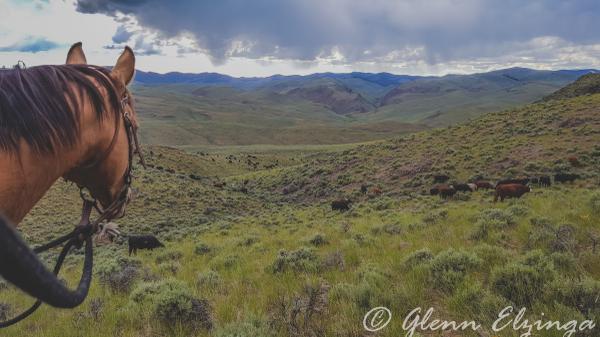
Seventy percent of all the green grass that Alderspring beeves eat in a given year is found in these mountains. They eat wild plants. No plow or farmer has ever made a field here, because they couldn’t in the rocky and inaccessible steep land we graze. We share the landscape with wild sheep, elk, wolves, mountain lions and bears, shepherding beeves in a wandering path of over 600 miles of mountains, canyons and high altitude meadows in a given summer. The herding is all on horseback, within 70 square miles of certified organic rangeland. The organic certification is made possible by a cooperative arrangement we created with the Forest Service and BLM. To our knowledge, the Hat Creek area is the largest certified organic area in the country, and a first in a private/federal/state/and county partnership that manages such a large area pesticide-free.
We live with the beeves in the backcountry, grazing them, harvesting wild grasses, and leaving no trace that we’ve been there. Even our camps are carefully raked, cooking fire signs scattered and removed so that signs of our time there are gone. We stay completely away from streams and springs, except to pick up an occasional drink, saving those critical habitats for the other inhabitants of the wild that we share the land with.
So, you can see, there comes a certain respect, a reverence when you live in and with the wild. It’s a “gift of good land”, as Wendell Berry said, and husbandry of not only our beeves but the wild landscape they graze on is pleasure, not pain. It’s because we know the nutrition density we harvest off of these unique lands is special, akin to that of wild salmon. It’s a gift. The flavor alone of the beef we bring to the table attests to that, in my humble opinion.
So it is with pleasure that we dodge the rain of rocks on the Salmon River Road. I put expensive heavy duty tires on all of our ranch and personal vehicles that can withstand the occasional hammering that they take by hitting rocks unexpectedly on blind curves. And we smile as we roll to a stop to watch a herd of bighorns jump from outcrop to outcrop just above us. Because as long as they live, the land that we capture our wild harvest from is good; it’s still a land of pristine soils and waters. And thankfully, there’s enough to share.
Happy Trails
Glenn, Caryl, Girls and Cowboys at Alderspring



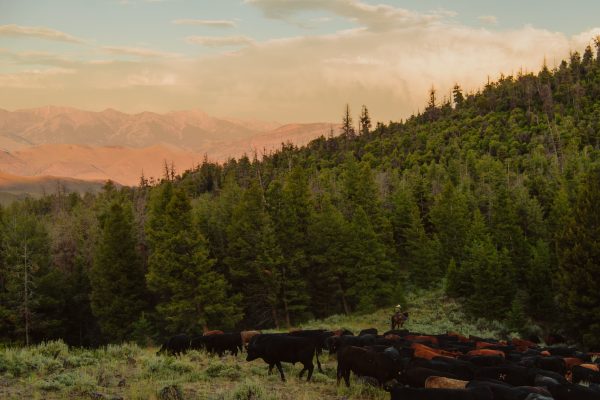
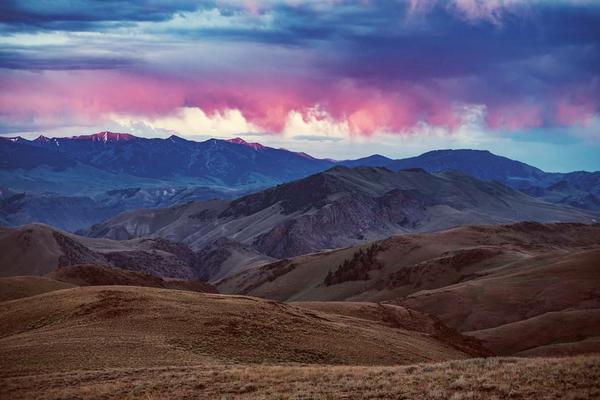
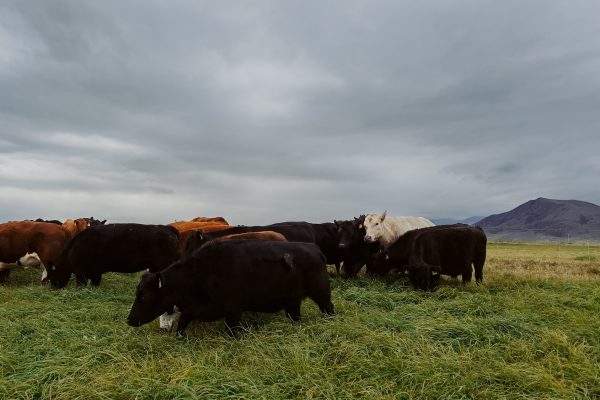
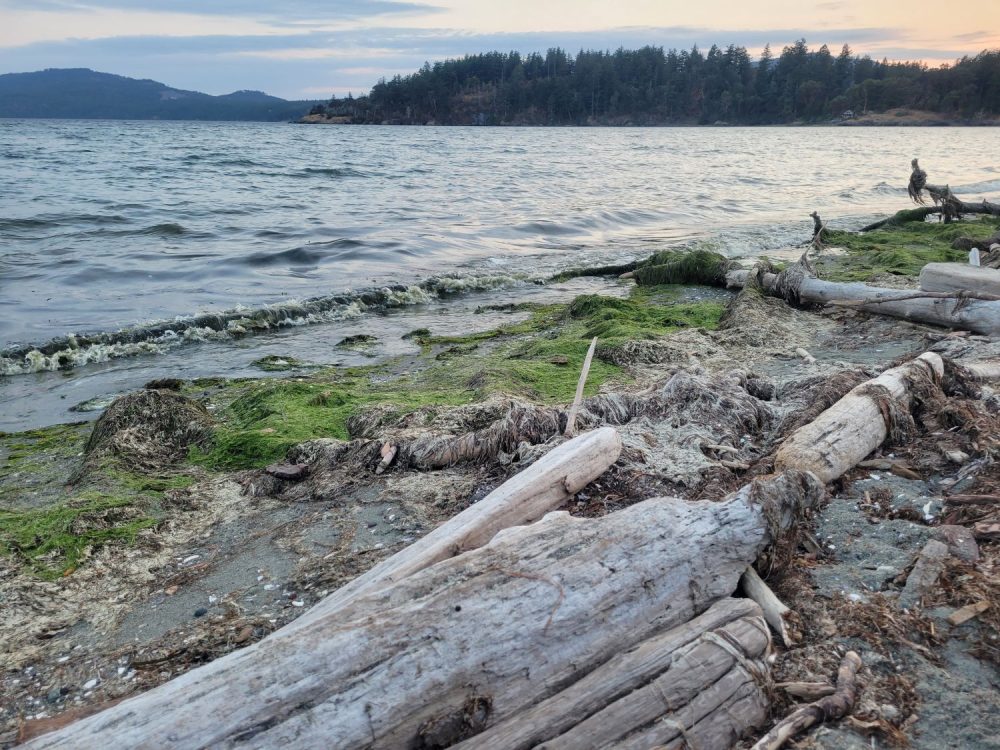
Deb Olsen
Oh how I have such great respect for all of you, you’ve learned how to keep your lands untainted and pristine so they flourish for all. I can only imagine that when you see a “big horn†you know you’re in the right track. I know it would be so much easier to take shortcuts to achieve success but once the resources are used up so are you. I love the fact that you don’t look at it in a business fashion but an equal working between man and earth as well as surroundings. You reap what you sow and I believe that God always smiles on you!